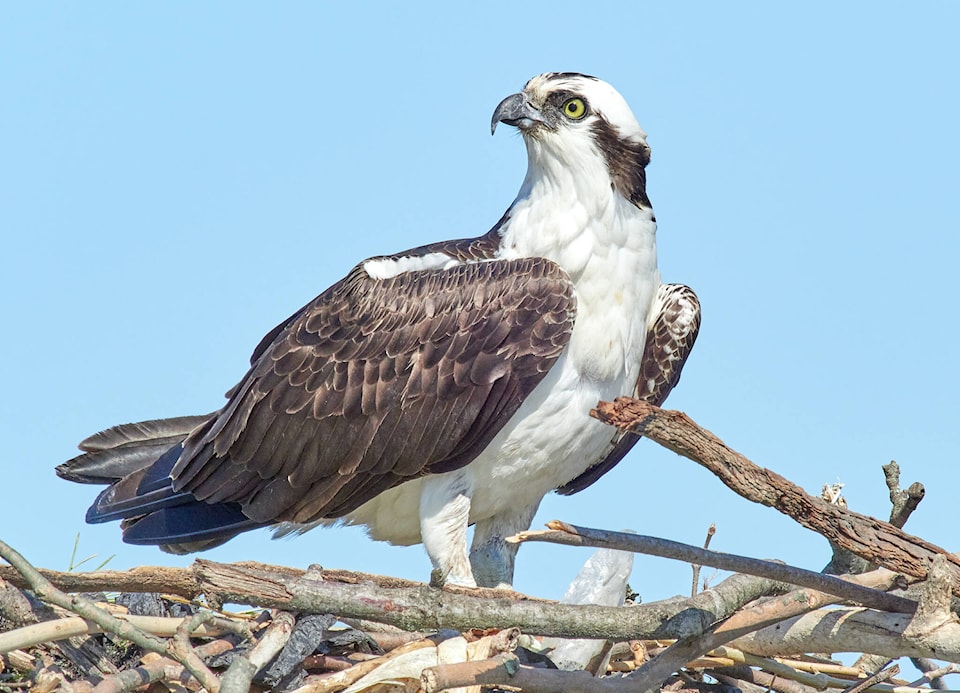I am sure that most people who live in the Bulkley Valley know about the Osprey nest on a pole near Lake Kathlyn across the highway from the Smithers airport. The adults are back again on the nest preparing to raise some little ones.
Ospreys have all the typical features of raptors such as hooked beaks, vivid yellow eyes, and huge talons, but they are especially adapted for catching and carrying fish. As with other raptors, they have four talons, three in front and one at the back, but the outer front toe can swivel to the rear especially as the bird is about to grasp a fish. This means there are two front talons and two back ones giving better purchase on the fish.
The toes are lined with short, stiff backwards facing spikes which make it much easier to hold onto a slippery, wriggling fish.
Ospreys have amazing eyesight and can spot fish from quite a distance above the water. Just as an osprey is about to hit the water to catch a fish, its nostrils shut tight which is important as they plunge down into the water headfirst and may become completely submerged. Bald eagles are also good at catching fish, but just use their long legs and talons to catch the fish, so they do not submerge their whole body under water.
To avoid becoming waterlogged as it leaves the water, the osprey gives itself a good shake so that the water slides off its oily feathers. It is the only raptor with oily plumage.
Ospreys have long slender arched wings to help them get up out of the water and take flight with their catch. Next time you see an osprey flying with a fish in its talons, take a good look at the fish. The osprey manipulates the fish so that the fish’s head is facing forward in the most aerodynamically efficient position to reduce drag as the bird flies back to the nest or feeding post – an amazing adaptation.
Ospreys like to build nests on top of posts or high features where they have a good view of their surroundings. Sometimes, they build on the top of posts carrying electrical wiring and this can cause serious problems like power outages or electrocution of the birds. To alleviate this a flat platform placed nearby will sometimes encourage the birds to move their nest – although it has not worked at the one near the former Par Three just south of the Bulkley River bridge in Smithers.
